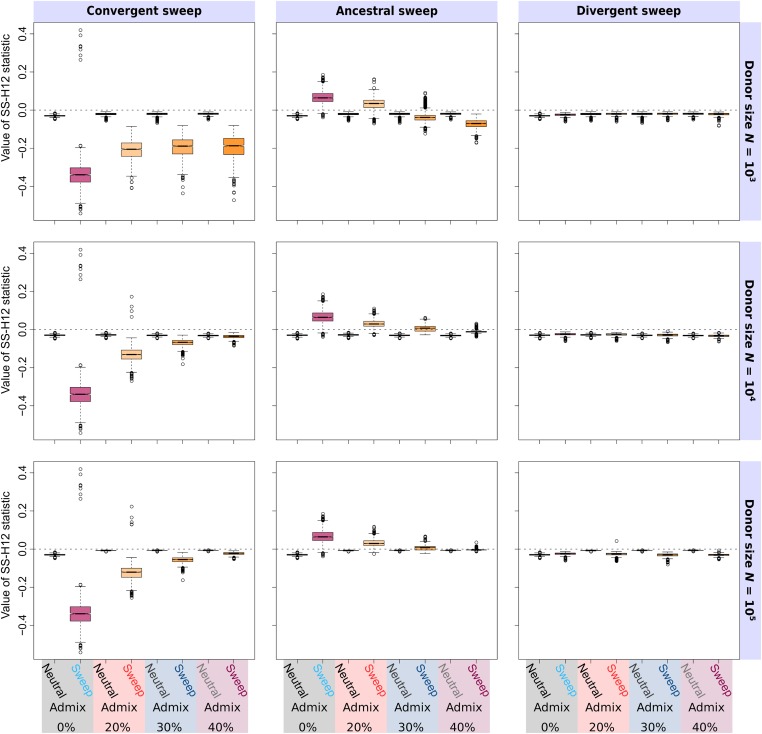Figure 4.
Effect of admixture from a diverged, unsampled donor lineage on distributions of SS-H12 values at peaks of maximum , in samples consisting of individuals from populations following the simplified mammalian model (; 0.05 coalescent units), under simulated recent ancestral, convergent, and divergent sweeps. For ancestral sweeps, selection occurred 1400 generations (0.07 coalescent units) before sampling. For convergent and divergent sweeps, selection occurred 600 generations (0.03 coalescent units) before sampling. The effective size of the donor population varies from (an order of magnitude less than that of the sampled populations), to (an order of magnitude more), with admixture at 200 generations (0.01 coalescent units) before sampling at rates 0.2 to 0.4, modeled as a single pulse. The donor diverged from the sampled populations generations (one coalescent unit) before sampling. In divergent sweep scenarios, admixture occurred specifically into the population experiencing a sweep. All sample sizes are of diploid individuals, with 1000 replicates performed for each scenario. For comparison, we include unadmixed results in each panel.

